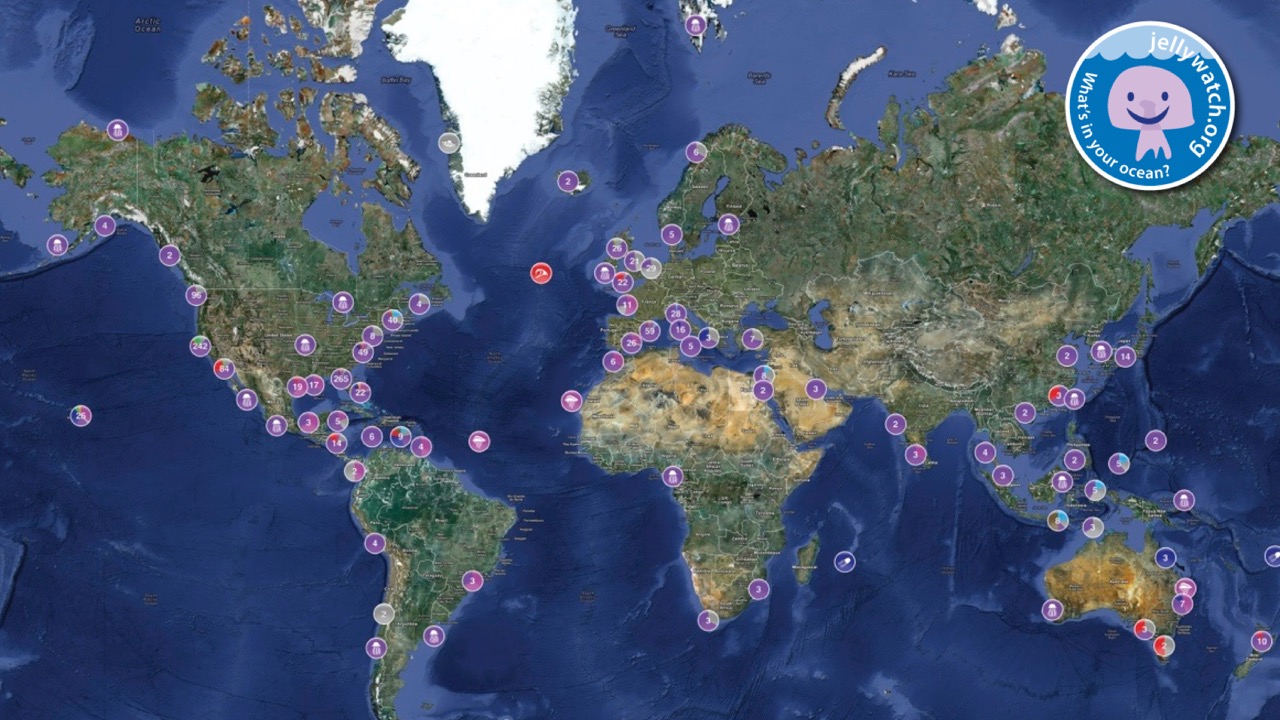
Crystal. Lion’s mane. Sea nettle. Moon. Comb. The Big Red. These are some of the species of jellyfish that live in Southeast’s waters.
Eric Lunde, a scuba diver in Ketchikan, describes one he encountered:
“It was this gelatinous moon-like greyish orb with just a little bit of a translucent skirt. It was just very still, drifting in the water.”
A California researcher is incorporating public observations like these, posted on jellywatch.org, into his research.
Dr. Steven Haddock from the University of California, Santa Cruz said jellyfish can survive, even thrive through cold and dark Alaska winters. He said a common perception people have of jellyfish is that they “like warmer water for some reason. But in Alaska, the species like the lion’s mane, are really restricted to colder water.”
Haddock researches marine bioluminescence, zooplankton and jellyfish in the deep sea, off the California coast. But he typically doesn’t study nearshore jellies.
He hopes citizen science data will help paint the big picture of jellyfish blooms across the planet.
“We can actually get a lot of insight into what’s happening on a large scale with regard to jellyfish abundances,” Haddock said.
His citizen science project has two main objectives. One goal is to document a wider ocean range than he, the scientist, can observe on his own.
“Citizen science in general is valuable because it is multiplied with such large numbers,” he said.
Haddock said that his research boat charters are expensive and he can only be out on the water for a limited period of time.
Meanwhile people worldwide experience the ocean every day, and make valuable observations.
“To tap into that pool of citizen scientists has huge advantages for the data set,” he said.
While some hypotheses contend that a warmer climate has increased jelly blooms, Haddock said more widespread data are needed to determine if these theories are accurate.
Citizen science research also has educational benefits. Haddock hopes it will help combat a misconception that jellyfish are evil invaders of the ocean.
He said that posts to his website that include a photo are useful, but documenting an observation without a photograph is better than no posting at all.
Haddock described the value of one posting by a Ketchikan diver:
“He gave a perfect description. So he didn’t have a photo, but he gave a description of this jelly that sounds like a deep-sea species that we discovered here in Monterey, and a colleague of mine just described it recently,”Haddock said. “It’s called Tiburonia. We call it ‘The Big Red’ because it’s like the size of a beach ball. So this guy diving said ‘I feel like I’m reporting a big-foot sighting.’”

He added: “I think it actually could be a sighting of this relatively newly discovered deep-sea species that he saw just while scuba diving off Ketchikan.”
Haddock only knows this citizen scientist by Jellywatch username, yet he reported a valuable observation to the scientific community.
What Haddock really needs are observations of “no jellyfish sighted,” posted on his website. He said “clean seas reports” give documented sightings greater research validity. Haddock wants to know whether a lack of postings means an actual deficit of jellyfish, or just a lack of human observations. Seeing no jellyfish is just as significant as seeing many.
